《A THEOR OF LEGAL CENTENCES》
| 作者 | MANUEL ATIENZA AND JUAN RUIZ M 编者 |
|---|---|
| 出版 | KLUWER ACADEMIC PUBLISHERS |
| 参考页数 | 194 |
| 出版时间 | 1998(求助前请核对) 目录预览 |
| ISBN号 | 0792348567 — 求助条款 |
| PDF编号 | 813694868(仅供预览,未存储实际文件) |
| 求助格式 | 扫描PDF(若分多册发行,每次仅能受理1册) |
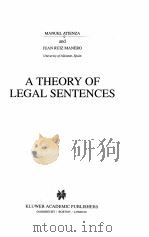
CHAPTER Ⅰ: MANDATORY NORMS: PRINCIPLES AND RULES1
1. Introduction. Types of principles1
1.1. The discussion about principles in contemporary legal theory: How it all started1
1.2. Different meanings of 'legal principle'3
1.3. A proposal of classification5
2. Principles and rules6
2.1. A structural approach to the distinction7
2.2. Principles and rules as reasons for action12
2.3. Principles, rules, powers, and interests15
3. The explanatory, the justificatory and the legitimatory dimension of principles19
3.1. Principles in legal explanations20
3.2. Principles in legal reasoning21
3.3. Principles, control and legitimation of power25
APPENDIX TO CHAPTER Ⅰ: REPLY TO OUR CRITICS26
1. Mandatory rules as peremptory reasons, and principles as non-peremptory reasons; the 'closed' or 'open' configuration of the conditions of application27
1.1. Prieto's critique27
1.2. Peczenik's critique34
2. Principles and full compliance36
2.1. Prieto's position37
2.2. Peczenik's position41
CHAPTER Ⅱ: POWER-CONFERRING RULES44
1. Introduction44
2. What power-conferring rules are not45
2.1. First exclusion: Power-conferring rules are not deontic or regulative norms46
2.2. Second exclusion: Power-conferring rules cannot adequately be understood in terms of definitions, conceptual rules, or qualifying dispositions53
3. What power-conferring rules are57
3.1. Three approaches and some ontological assumptions57
3.2. A structural approach58
3.3. A functional approach: Power-conferring rules as reasons for action65
3.4. Power-conferring rules, non-normative powers, and interests72
APPENDIX TO CHAPTER Ⅱ: REPLY TO OUR CRITICS76
1. Introduction76
2. Critique of our critique of the deontic (or prescriptivist) conception76
3. Are we treating the conceptualist thesis fairly?84
4. Problems with our conception85
CHAPTER Ⅲ: PERMISSIVE SENTENCES90
1. Permission in contemporary legal theory90
1.1. The pragmatic irrelevance of permissive norms. The category of 'permissive norms' is unnecessary. Echave-Urquijo-Guibourg (1980) and Ross (1968)91
1.2. Von Wright's proposal: Permissive norms as promises94
1.3. Weak and strong permission in Alchourron and Bulygin99
2. Reformulating the problem103
2.1. Permission and the regulation of 'natural' conduct103
2.2. Permission and the exercise of normative powers107
2.3. Permission and principles. Constitutional freedoms112
3. Some conclusions115
APPENDIX TO CHAPTER Ⅲ: A NOTE ON CONSTITUTIONAL PERMISSION AND BASIC RIGHTS116
CHAPTER Ⅳ: VALUES IN THE LAW120
1. Introduction120
2. Two conceptions of criminal norms121
3. The double-faced character of norms and value judgments127
4. Types of norms and types of values135
CHAPTER Ⅴ: THE RULE OF RECOGNITION141
1. Introduction141
2. Jurists and the 'normative value' of the constitution142
3. The rule of recognition as ultimate norm145
4. Changing the rule of recognition without rupturing legal continuity?146
5. A host of problems147
6. Who shapes the rule of recognition?148
7. The conceptual, directive and evaluative dimensions of the rule of recognition. The rule of recognition and the exclusionary claim of the law. Why accept the rule of recognition?152
8. How many rules of recognition? Certainty and penumbra in the rule of recognition158
CHAPTER Ⅵ: CONCLUSIONS162
1. Introduction162
2. A classification of legal sentences: Table 1162
3. A comparative analysis of the different types of sentences: Table 2164
TABLE Ⅰ. CLASSIFICATION OF SENTENCES175
TABLE Ⅱ. COMPARATIVE ANALYSIS OF DIFFERENT TYPES OF SENTENCE176
BIBLIOGRAPHY183
INDEX OF NAMES191
1998《A THEOR OF LEGAL CENTENCES》由于是年代较久的资料都绝版了,几乎不可能购买到实物。如果大家为了学习确实需要,可向博主求助其电子版PDF文件(由MANUEL ATIENZA AND JUAN RUIZ M 1998 KLUWER ACADEMIC PUBLISHERS 出版的版本) 。对合法合规的求助,我会当即受理并将下载地址发送给你。
高度相关资料
-

- THE LEGAL NEEDS OF THE PUBLIC THE FINAL REPORT OF A NATIONAL SURVEY
- 1977 AMERICAN BAR FOUNDATION
-
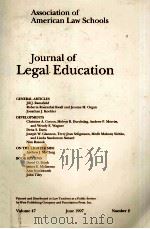
- Journal of Legal Education
- 1997 printed and Distributed to Law Teachers as a Public Service
-

- ASSESSMENT OF FAMILY VIOLENCE A CLINICAL AND LEGAL SOURCEBOOK
- 1992 A WILEY INTERSCIENCE PUBLICATION
-
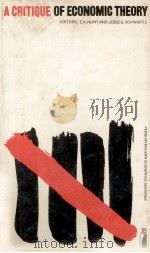
- A critique of economic theor
- 1972 Richard Clay
-
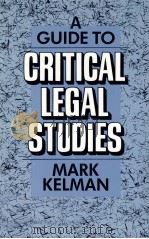
- A guide to critical legal studies
- 1987 Harvard University Press
-
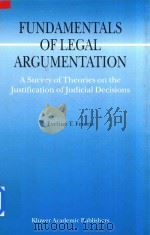
- Fundamentals of Legal Argumentation A Survey of Theories on the Justification of Judicial Decisions
- 1999 KLUWER ACADEMIC PUBLISHERS
-
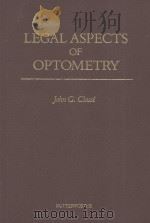
- LEGAL ASPECTS OF OPTOMETRY
- 1989 BUTTERWORTHS
-

- INDIAN LEGAL MATERIALS A BIBLIOGRAPHICAL GUIDE
- 1970 BOMBAY:N.M.TRIPATHI PRIVATE LTD
-

- MISCONDUCT OF STUDENTS A LEGAL AND DISCPLINARY STUDY
- 1981 DEEP AND DEEP PUBLICATIONS
-

- A SOURCE BOOK OF AUSTRALIAN LEGAL HISTORY
- 1979 THE LAW BOOK COMPANY LIMITED
-
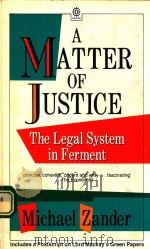
- A MATTER OF JUSTICE THE LEGAL SYSTEM IN FERMENT
- 1989 OXFORD
提示:百度云已更名为百度网盘(百度盘),天翼云盘、微盘下载地址……暂未提供。➥ PDF文字可复制化或转WORD



